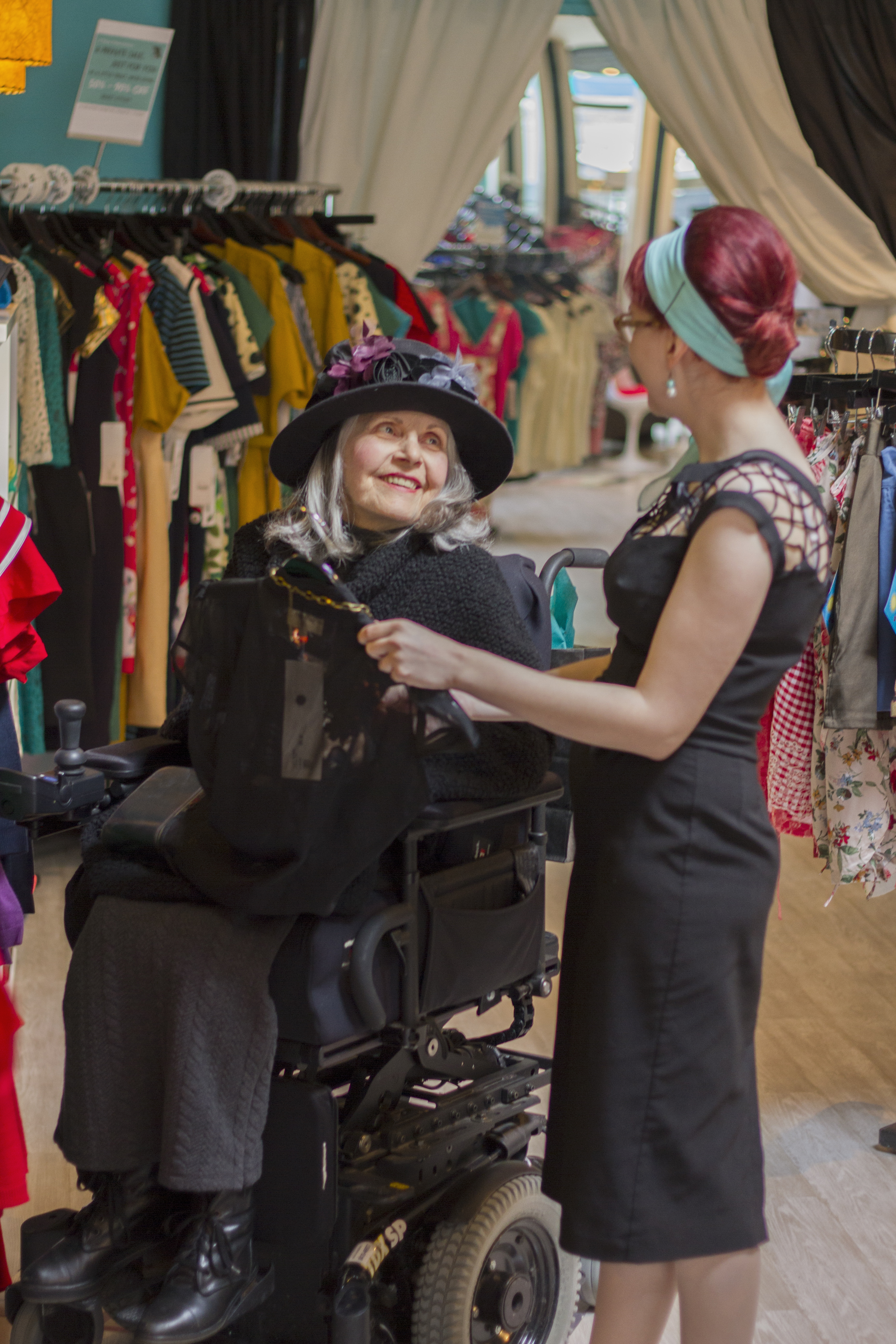People with Physical or Mobility Disabilities
Only some people with physical or mobility disabilities use a wheelchair. Someone with arthritis may use a cane or walker, while someone with a heart or lung condition may not use a mobility device but may have difficulty walking longer distances.
Tips:
- Ask before you help. People with disabilities often have their own ways of doing things.
- Don’t touch or move a person’s equipment (for example, wheelchair or walker) without permission.
- If you have permission to move a person’s wheelchair, don’t leave them in an awkward, dangerous or undignified position, such as facing a wall or in the path of opening doors.
- If you need to have a lengthy conversation with someone who uses a wheelchair or scooter, consider sitting so you can make eye contact at the same level.
- If it applies, inform your customer of the accessible features in the immediate area (such as automatic doors, accessible washrooms, elevators or ramps).
- Think ahead and remove any items that may cause a physical barrier, such as boxes left in an aisle.
- If the service counter at your place of business is too high for a person using a wheelchair to see over, step around it to provide service. Have a clipboard handy if filling in forms or providing a signature is required.
- Keep in mind that a person’s physical disability may not be visible or obvious. For example, a person may have difficulty standing for long periods of time and may ask to sit while waiting to be served.


